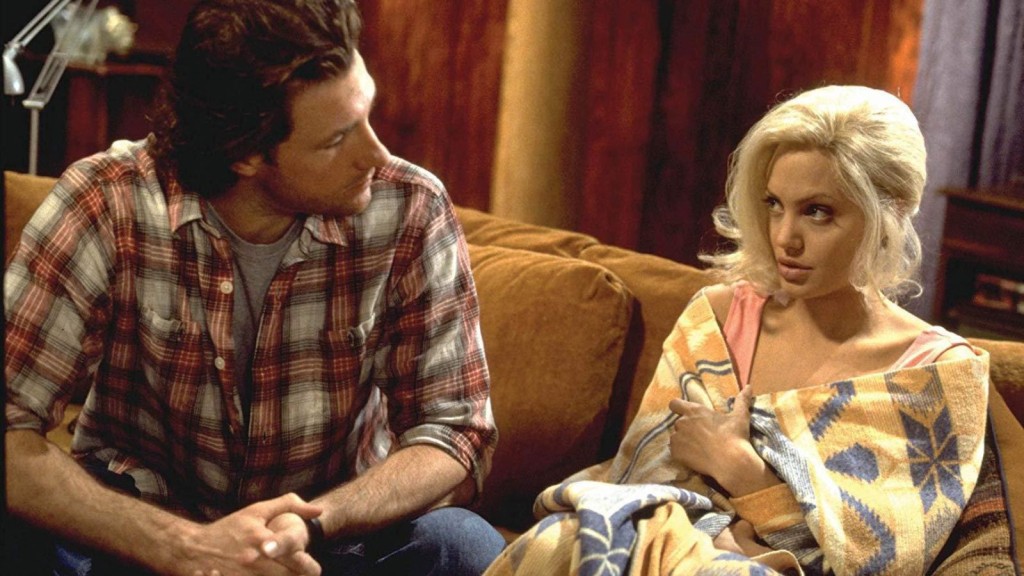
Life or Something Like It Ending Explained: Why is Everyone Talking About this 23-Year-old Angelina Jolie film?
Directed by Stephen Herek and starring Angelina Jolie, the 2002 romantic drama Life or Something Like It explores themes of fate, personal growth, and the beauty of embracing life’s unpredictability. As the movie unfolds, Lanie Kerrigan—played by Jolie—is forced to confront her superficial existence and re-evaluate what truly matters.
The ending is heartwarming yet thought-provoking, leaving viewers with questions about fate, free will, and the power of self-discovery. Here's a closer look at how the film wraps up and what its ending really means.
Life or Something Like It plot Overview
At the start of Life or Something Like It, Angelina Jolie's Lanie Kerrigan is a driven, ambitious TV reporter in Seattle, fixated on landing a high-profile position with AM USA Morning Show in New York. Her life seems perfect—she's on track for career success, in a relationship with a handsome man, and living in a world she’s carefully curated. Everything changes, however, when she encounters Jack, a homeless man who claims to have prophetic visions.
Jack’s predictions leave Lanie shaken. He tells her she won’t get her dream job and has only a week to live. While she initially dismisses the prophecy as nonsense, Jack’s other predictions begin coming true, forcing Lanie to rethink her life. What follows is an emotional journey that transforms Lanie from a shallow, career-obsessed individual into someone who learns to embrace vulnerability, love, and authenticity.
Why Doesn't Angelina Jolie's Lanie die? The Truth Behind Jack's Prophecy
One of the most pressing questions the film leaves viewers with is: Why doesn’t Lanie die as Jack predicted? While it appears that Jack’s prophecy about Lanie’s death doesn’t come true, a deeper analysis reveals that the prophecy was not meant to be taken literally. Instead, it was a symbolic statement about the death of Lanie’s old life—the life defined by ambition, control, and superficial success.
When Jack tells Lanie she will die in a week, he’s referring to the emotional and spiritual death that would occur if she continued down her path of chasing fame and perfection. By the end of the film, Lanie’s transformation is complete: she chooses authenticity and love over fame and recognition, and in doing so, the "old Lanie" dies. Jack’s prophecy, then, was never about her physical death but about the rebirth of her true self.
The Shocking Shooting and Its Symbolic Meaning
Another pivotal moment in the film occurs when Angelina Jolie's Lanie is shot during the chaos of a routine day at the TV studio. This unexpected, random violence adds emotional weight to the story’s message. Lanie is shot by a stray bullet in a chaotic, unpredictable turn of events—a metaphor for how life’s most significant changes often come not through grand plans but through the uncontrollable moments that force us to stop and reflect.
Although Lanie briefly dies on the operating table, her revival represents her emotional resurrection. The shooting and her brief experience with death emphasize the film’s core theme: that life is fragile and unpredictable, and the most important moments are often the ones we don’t plan for.
Why does Lanie Reject the AM USA Job?
The AM USA job offer, which was once the pinnacle of Lanie’s ambition, now holds no appeal for her. After spending the week re-examining her life and developing a meaningful connection with Pete, a cameraman, and his son, Tommy, Lanie realizes that what truly matters is not professional success but emotional fulfillment. She has grown beyond the image-obsessed, fame-driven reporter who would have eagerly accepted the job. Instead, she chooses a simpler, more authentic life.
Rejecting the job isn’t just about turning down a career opportunity—it’s a powerful act of self-liberation. Lanie is no longer defined by her superficial goals but by her willingness to live in the present and embrace real, human connections.
Lanie and Pete’s Future: A love Built on Authenticity
By the end of the film, Lanie’s relationship with Pete has blossomed into something real and meaningful. While the film doesn’t explicitly confirm that Lanie and Pete end up together in a traditional romantic sense, it’s clear that they have built a solid foundation for their future. Their bond is grounded in vulnerability and mutual respect—qualities Lanie has only recently discovered in herself.
In the final scene, Lanie, Pete, and Tommy are seen at a baseball game, sharing a quiet, joyful moment. The simplicity of the scene—free from glitzy media or corporate accolades—reflects the new life Lanie has chosen. It’s a life rooted in love, connection, and presence, rather than ambition or superficial success.
Lanie’s monologue at the end, where she reflects on her transformation, reinforces this sentiment. Her line, “Someone once said, ‘Live every day as if it were your last, because one of these days, it will be,’” acknowledges the profound shift she’s undergone. The Lanie who once lived for career validation is gone, replaced by someone who values living authentically.
The film’s core Message: Embracing Life’s Unpredictability
Life or Something Like It is a film that invites viewers to reflect on what truly defines success and happiness. It suggests that the most meaningful transformations don’t come from external achievements but from internal awakenings. Lanie’s journey from a career-driven woman to someone who embraces love, authenticity, and vulnerability offers a profound message about personal growth.
By the end of the film, Angelina Jolie's Lanie’s choices reflect the film’s core themes: life is unpredictable, and sometimes, the most important moments come from embracing uncertainty. Her rejection of the AM USA job, her survival of the shooting, and her eventual connection with Pete all symbolize the unpredictable twists in life that can lead to profound personal growth.
The ending of Life or Something Like It might not tie up every loose end, but it’s undeniably satisfying in its portrayal of a woman who learns to live fully and authentically. It’s a reminder that sometimes, the biggest changes in our lives happen when we let go of the illusion of control and open ourselves to the possibilities of the present.
Why Is Everyone Rushing to Watch 'Life or Something Like It' After so many Years?
Almost 23 years after its release, Life or Something Like It has been gaining renewed attention, and for good reason. Despite a mixed reception at the time of its release, the film has found a new audience, making its way into the Netflix UK top 5 this week. (via Metro UK) But what is driving this unexpected surge in interest?
A Tale of Life, Love, and Second Chances
The film’s message about the fleeting nature of life and the importance of living authentically resonates deeply with many viewers. “What begins as a somewhat predictable Hollywood romantic comedy, spirals into a tender, sweet love story and opens the door to life's deeper and more meaningful issues,” one Rotten Tomatoes Urban Cinefile Critics remarked.
Viewers are drawn to the film’s timeless message that life is short, and sometimes it takes a shocking wake-up call to start living fully.
A Mixed Reception, But a Growing Following
Upon its release in 2002, Life or Something Like It struggled to make a major impact, grossing just $16.9 million at the box office against a $40 million budget. (via Metro UK) Critics, in general, were not kind. The film currently holds a 28% rating on Rotten Tomatoes, with critics consensus calling it “too contrived and predictable” to effectively deliver its message.
The Sacramento News & Review went as far as to label it a “miserable mess” and NUVO News Weekly remarked that it made “the prospect of death a little less daunting.” (via Metro UK)
Yet, despite its critical shortcomings, the film has gained a significant following over the years, with more positive reviews appearing on platforms like Rotten Tomatoes and IMDb. “I won’t give it 5 stars, but I got more than I expected. I was expecting a very simple, predictable plot, and it was, but it was well executed,” one IMDb user shared. The commenter continued: "I may not remember it well a year from now, but I'll at least remember seeing it.”
Another wrote, “An inspiring film to say the least. Great performances from Angelina and the entire cast put together a piece of cinematic excellence that was lost in a lull of pre-summer rush…” (via Metro UK)
Interestingly, even after nearly two decades, many viewers are taking to streaming platforms to rediscover the film, and Life or Something Like It has garnered a reputation as a light, feel-good romantic flick to enjoy on a Saturday afternoon.
A Film with Staying Power
Despite its initial reception, Angelina Jolie's Life or Something Like It has stood the test of time and continues to captivate new audiences. While it may not be a cinematic masterpiece, its simple, relatable themes about living life authentically and letting go of superficial pursuits have a universal appeal.
Whether you're in it for the nostalgic appeal, the intriguing premise, or simply the easygoing romance, Life or Something Like It continues to deliver a comforting dose of life lessons with a side of laughter.
Life or Something Like It is available for streaming on Netflix.

















